I suppose if you are going to make your first trip to Le Mans (yes, really), being driven right up to the paddock and then jumping into Jaguar’s new Project 7 limited-edition supercar is probably the way to so it.
Jaguar used the Le Mans classic weekend for the dynamic launch of the production version of the F-type Project 7. The car made its static debut at the Goodwood Festival of Speed the weekend before, when the UK order books were opened (and, full, swiftly closed again).
And where better to reveal the Project 7 under its own power than on the circuit where Jaguar won the 24 Hours race in 1951 and 1953 (with the C-type) and in 1955, ’56 and’57 with the D-type?
To add the surreal nature of being waved into the paddock and handed a special Project 7 helmet (now on the options list by special request) I find myself staring at Jaguar D-type, registration OVC 50 the original factory prototype.
Read about the Jaguar Project 7 concept's development
Of course, the Project 7 is directly inspired by the D-type but it is amazing to see them nose to tail waiting to drive into the Le Mans pits, 59 years after the D-type first won at this circuit. The D-type is compelling tiny, running on seemingly tiny wheels and a narrow track.
Close up the iconic fairing behind the driver’s head is a slightly wonky aluminium fabrication held down to the body with a huge number of rivets. If you’ve spent time close up with WW2 aircraft, you’ll recognize the period aeronautical construction methods.
The Project 7 is in stark contrast to the D-type. It looks mean and serious in the baking afternoon sunshine; inherently purposeful and functional rather than some body-kitted sham.
The Jaguar F-Type otherwise feels complete normal from the cabin when parked, and even has conventional seatbelts rather than a four-point harness. It sits in the serious heat idling quite happily for 15mins and more, never fluffing or getting flustered. Its supercharged 5.0-litre V8 produces a claimed 567bhp and 502lb ft, allowing for a limited top speed of 186mph and a 0-60mph time of 3.8sec,
It’s this combination of classic styling and rarity with modern car effortlessness that inspired the Project 7 – and future models from JLR’s new SVO division.
As we finally pull into the – remarkably wide – Le Mans pit lane, the exhaust noise from D-type is fabulously period. With clearance to hit the track, the D-type pulls away like rocket. But then this little machine can hit 170mph with just 270bhp, so perhaps I shouldn’t have been so surprised.
In the Project 7, Jaguar’s driver is holding the car in formation with the D-type as the photographers lean out of the accompanying Jaguar F-Types and gesticulate wildly. We’ve got one lap to both assess the car and complete a photo session, and can’t dawdle because we’ve only been given an eight-minute slot.
I’ve recently spent time in Autocar’s long-term Jaguar F-Type convertible and know it has a pretty impressive ability to turn accurately into a corner, as well as offering up plenty of feedback.
Read Autocar's first drive of the Jaguar Project 7 concept
But it seems to me that the Project 7's stiffer front end and Jaguar XKR-S GT-donated front suspension results in it feeling to steer in an even more precise and keen fashion than the donor car.
From what I can tell, the setup is not overly aggressive in its response, but it is even more pitch accurate. It’s very impressive to watch the nose flowing into the big, wide, bends of the Le Mans circuit.
Even when the driver opens up along the back straight the cabin remains unruffled, despite the windscreen being cut down. It’s a comfortable place to sit and, even thought the track surface is pretty smooth, the Project 7 gives every impression that it will be civilized on public roads. Aside from the times when the driver gets off the gas and the exhaust erupts into a barrage of crackles and pops, that is.
There’s something friendly and accessible about Jaguar's F-type Project 7, even taking into account its monster engine and track-tuned suspension. SVO executive Harry Metcalfe says that Project 7 should be envisioned as a car that "you can drive down to the South of France with your girlfriend".
Indeed, to add to the car’s race ready but GT-able mix, the SVO team is trying to exploit space behind the seats to increase luggage capacity.
I had this dual-purpose idea in mind when we slipped off the track and down into the Le Mans pit lane behind the D-type. Indeed, over half a century ago, those works D-Types were driven from Coventry to Le Mans on public roads.
If the F-type Project 7 can mix a serious lap time at the Nürburgring and the ability to bat across Europe in air-conditioned civility, it will have nailed the essence of the D-type, if for a far more luxury-centric era.
Get the latest car news, reviews and galleries from Autocar direct to your inbox every week. Enter your email address below:


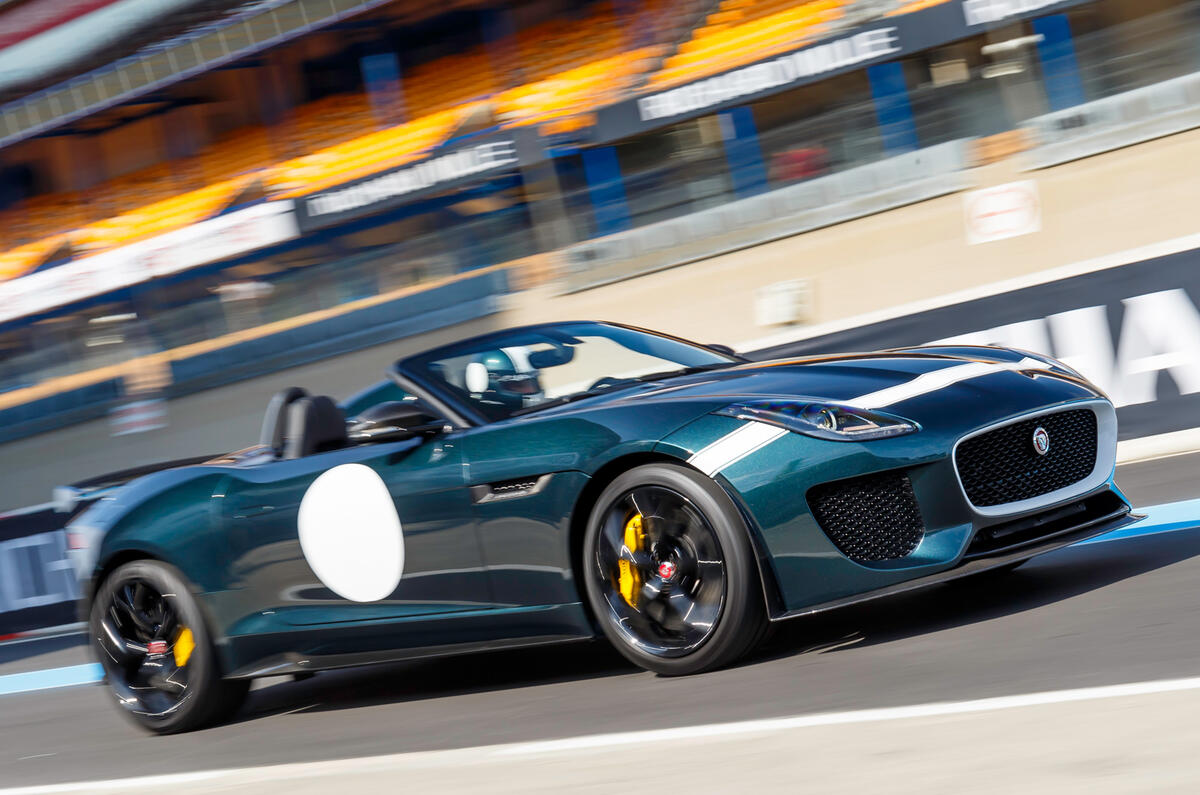
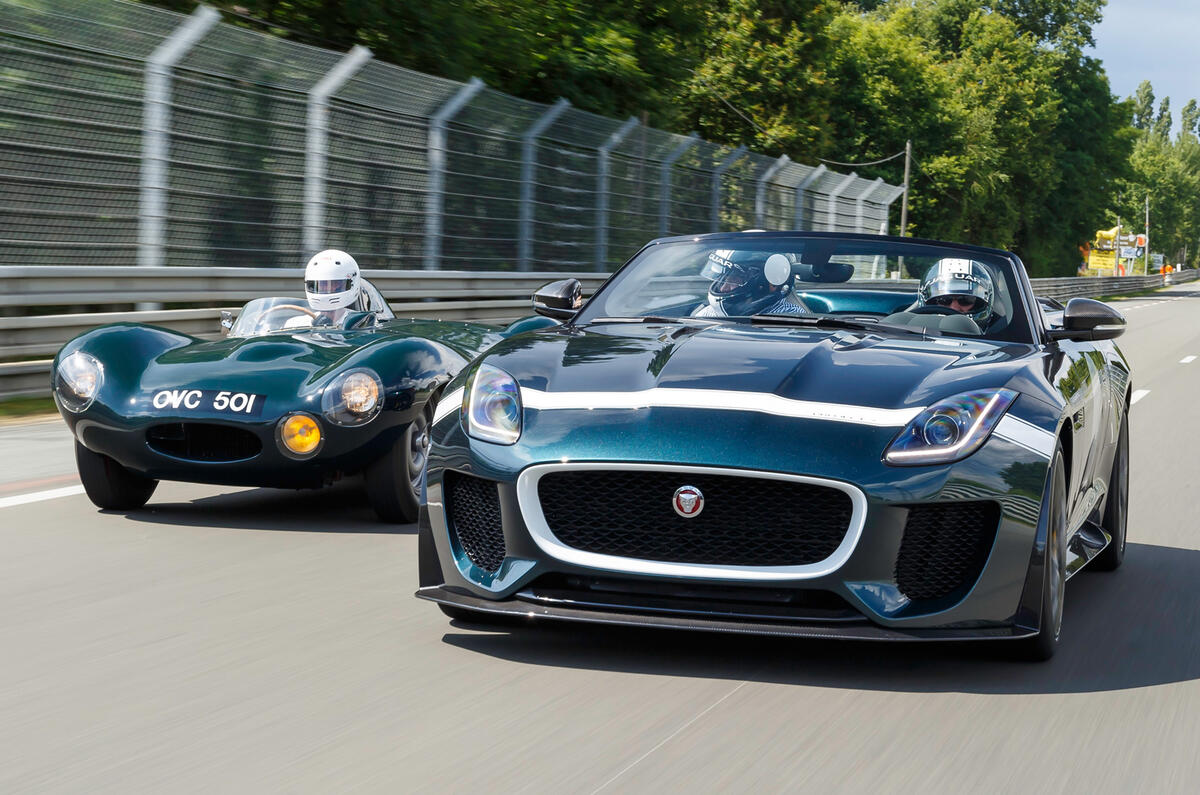
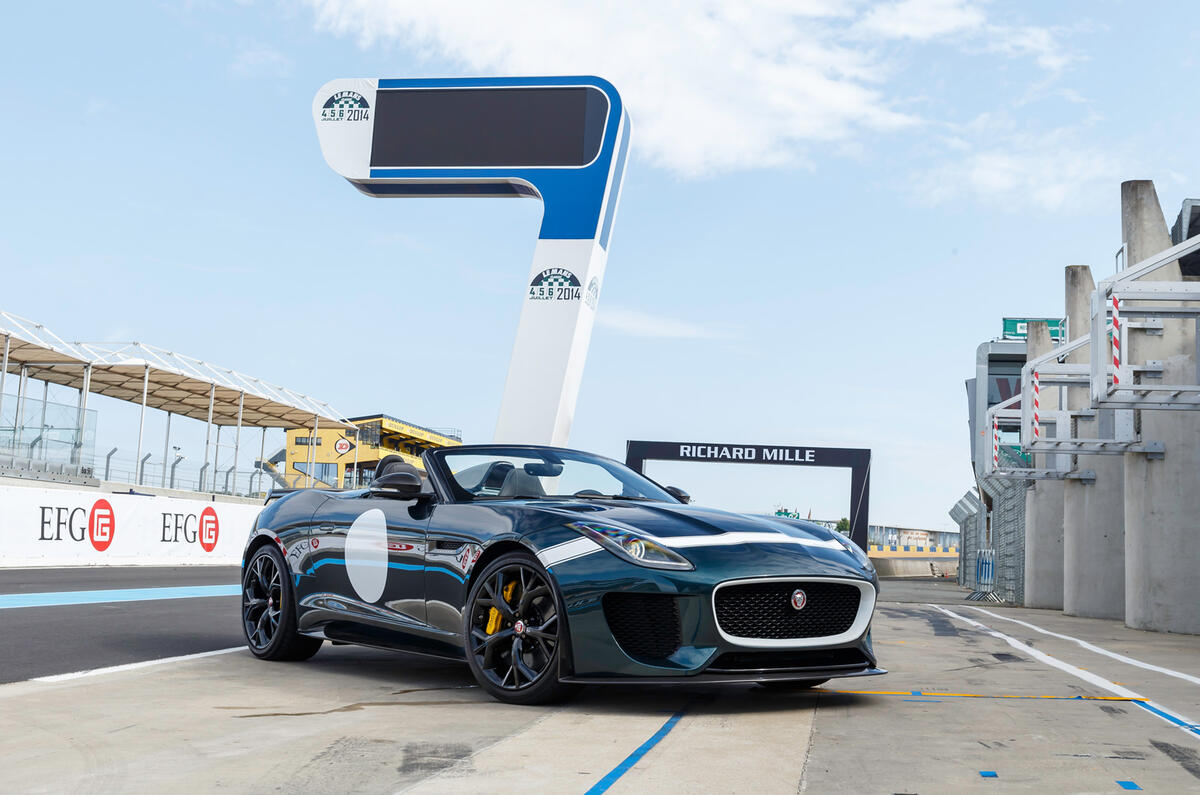
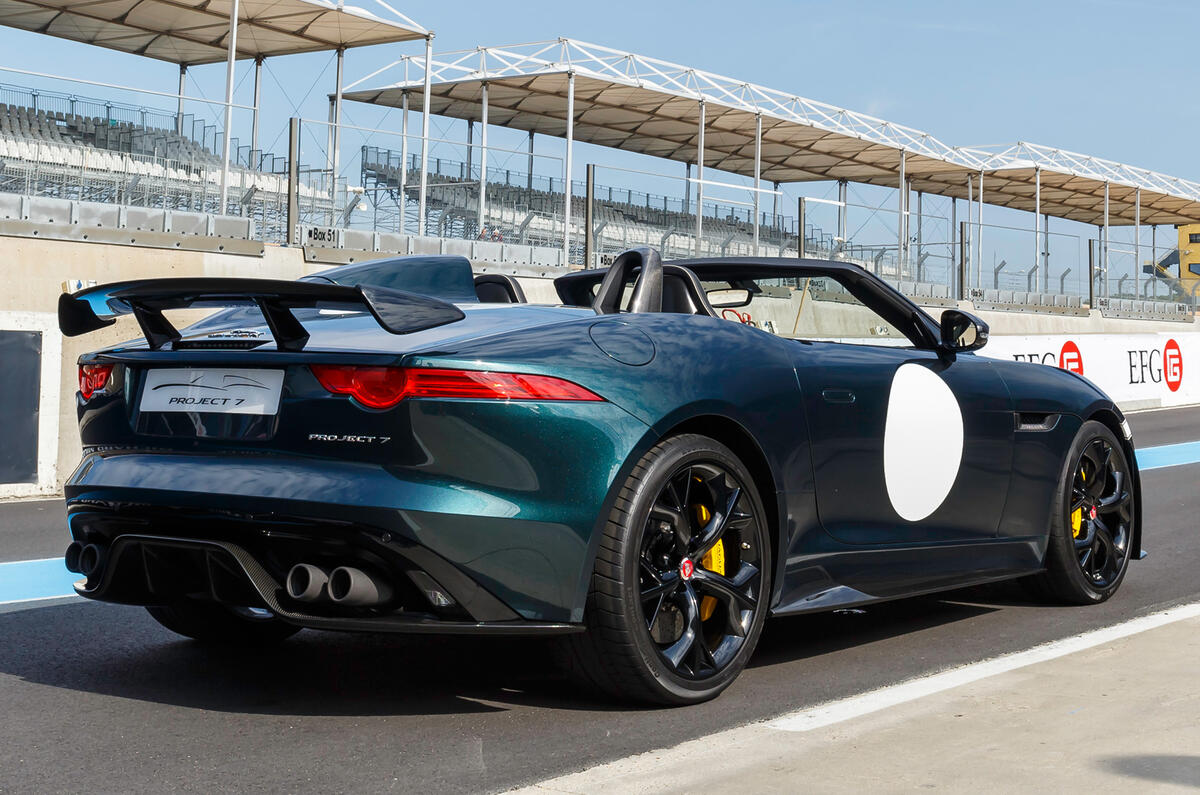
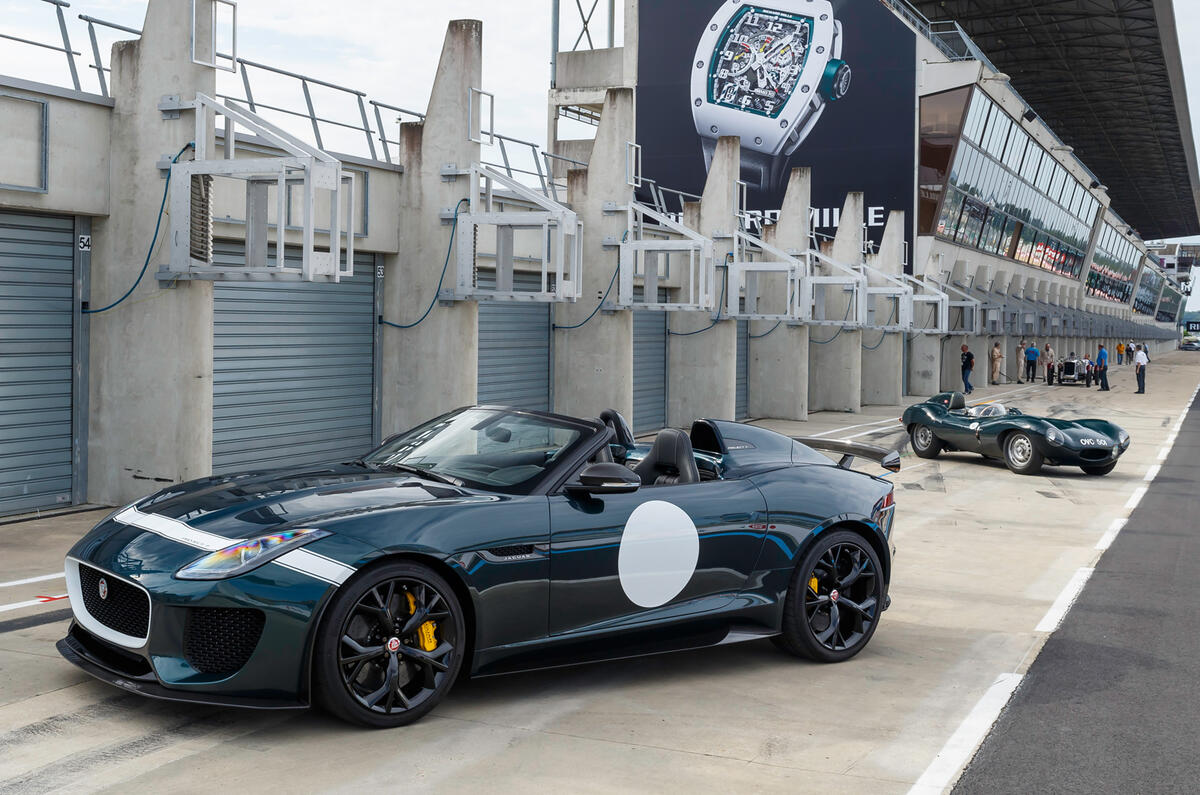
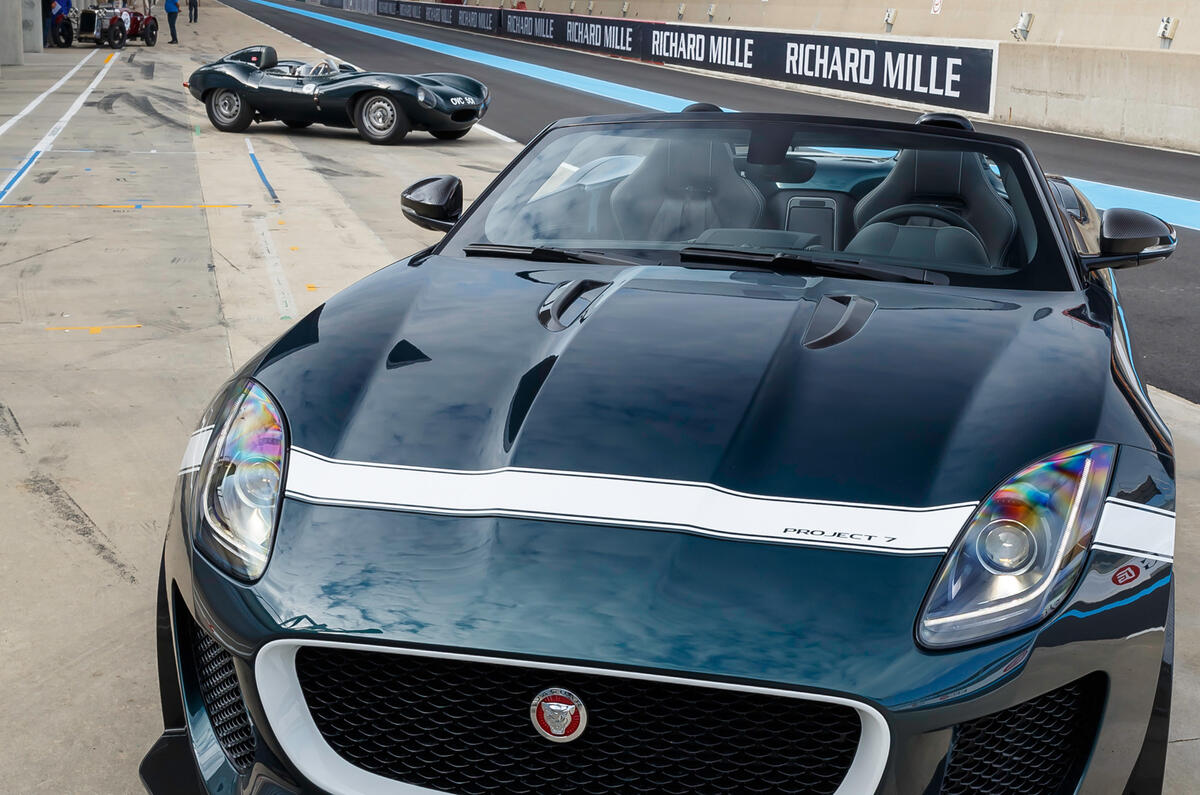

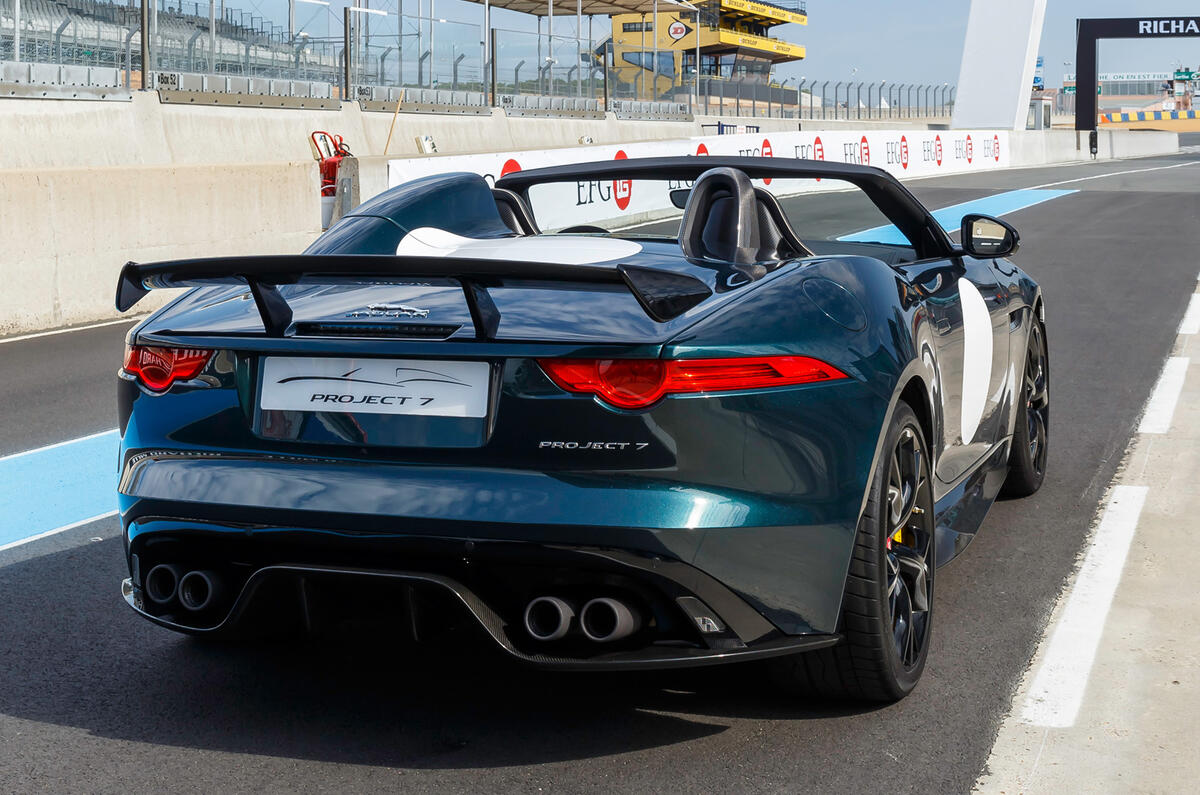
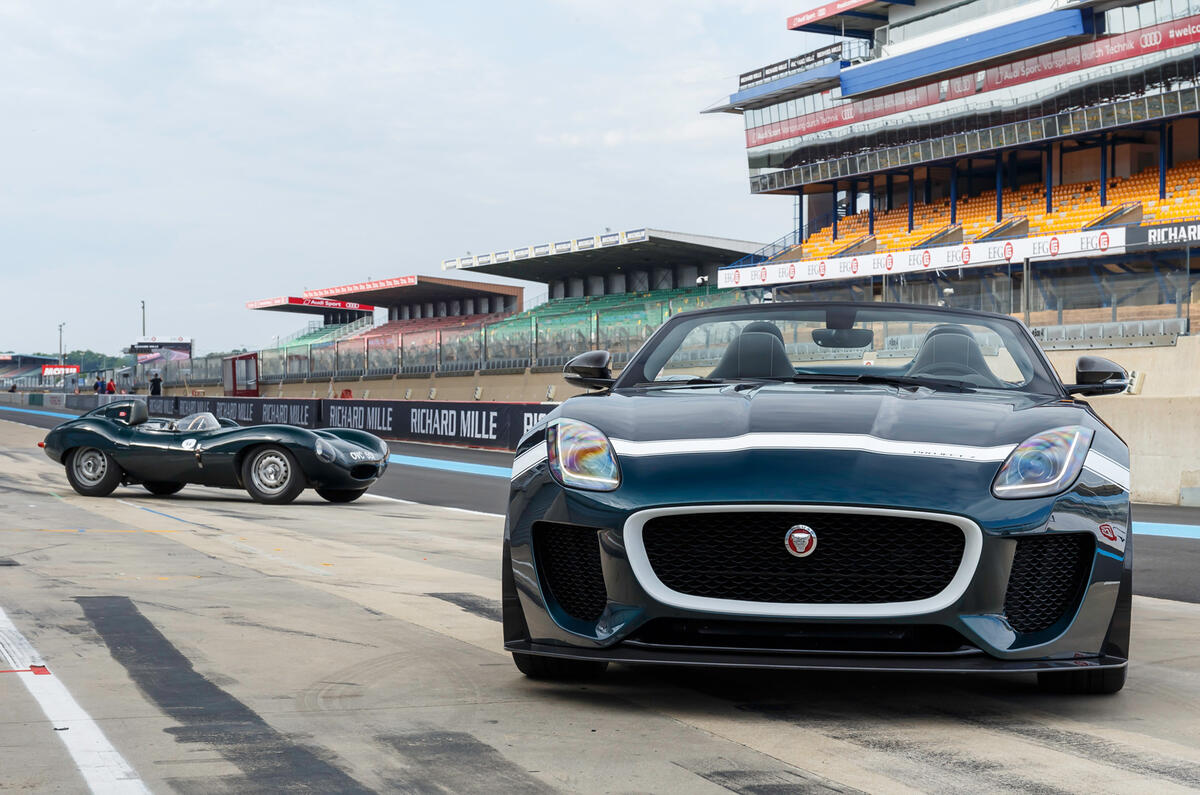
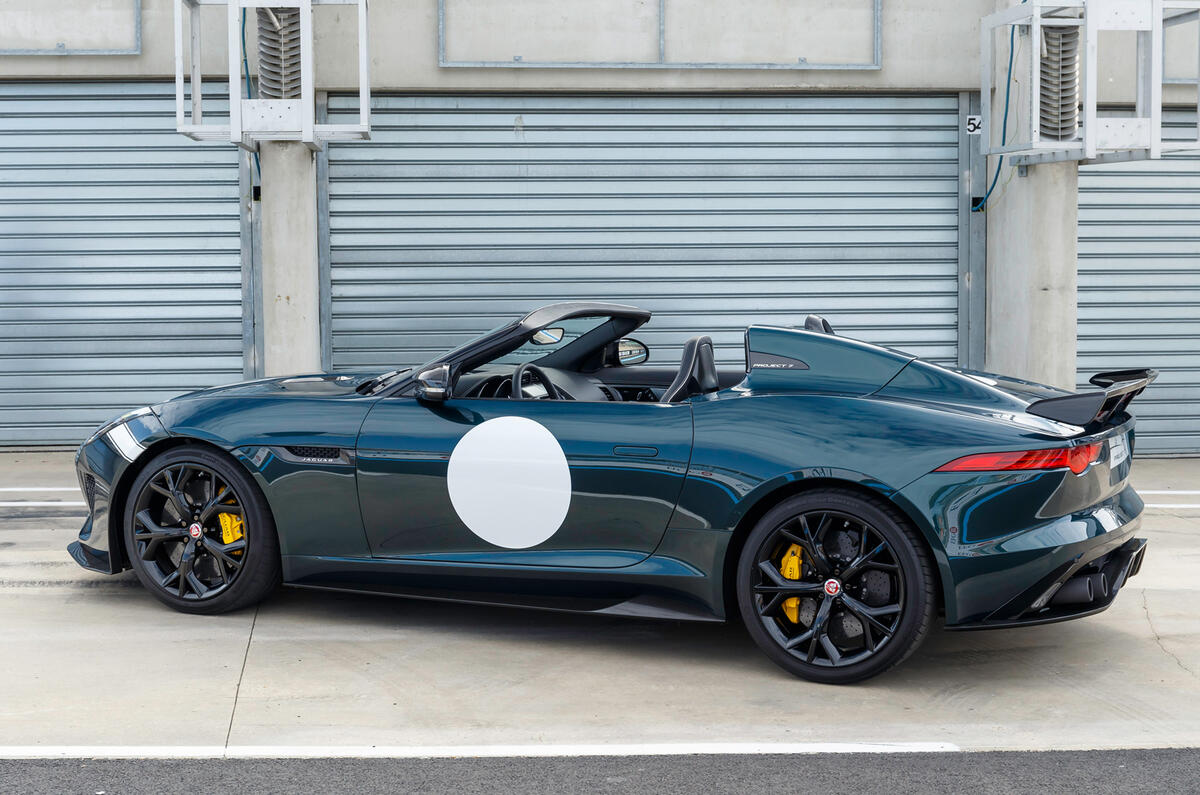
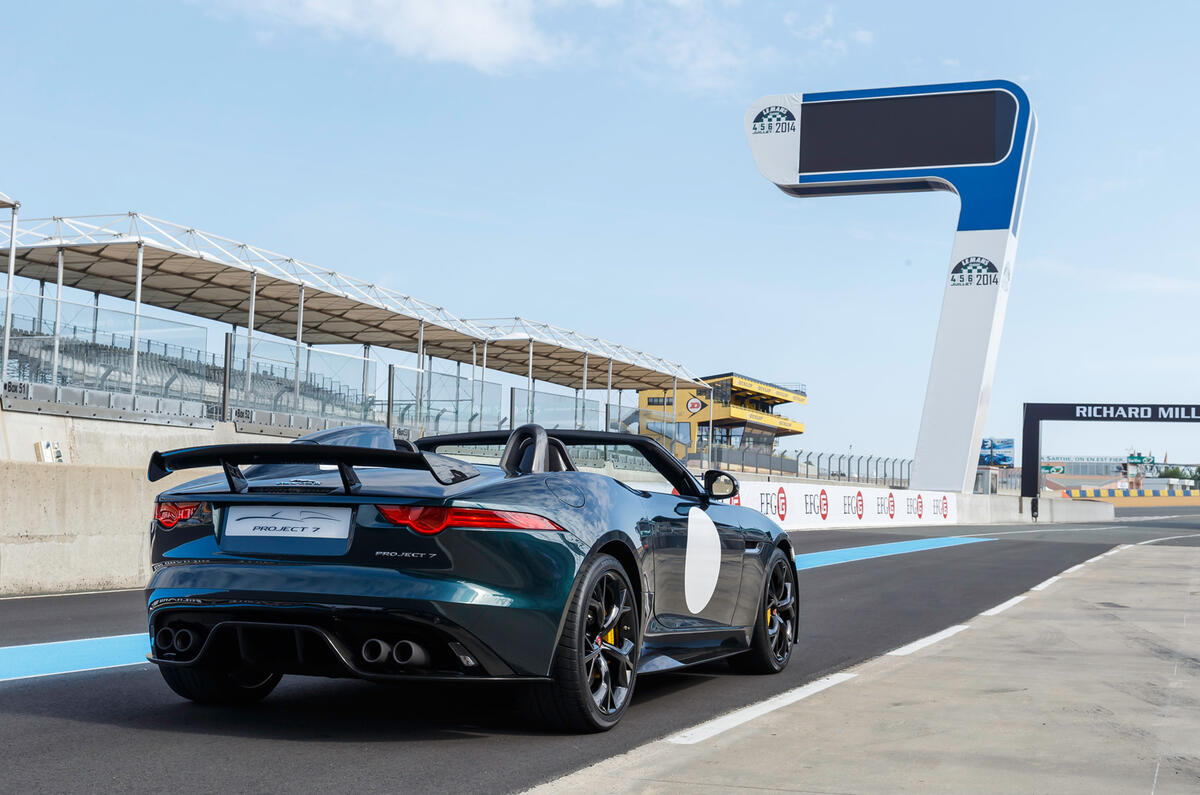
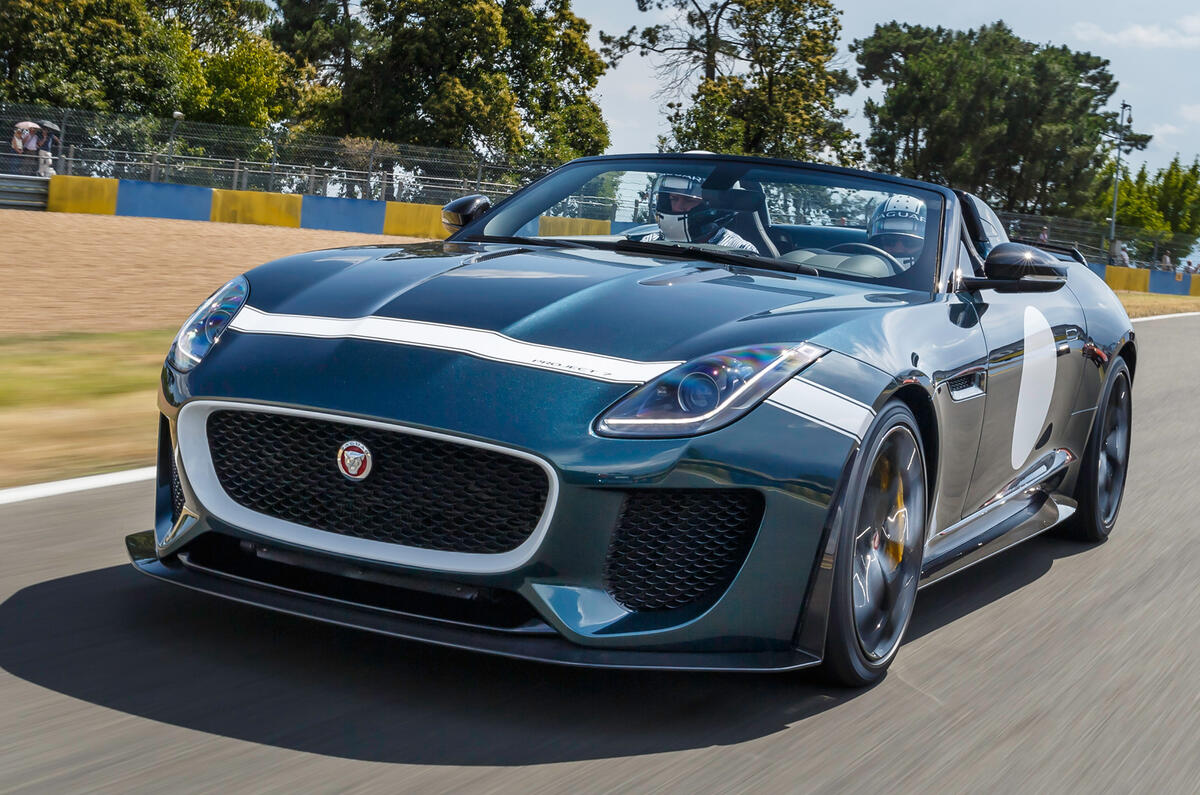

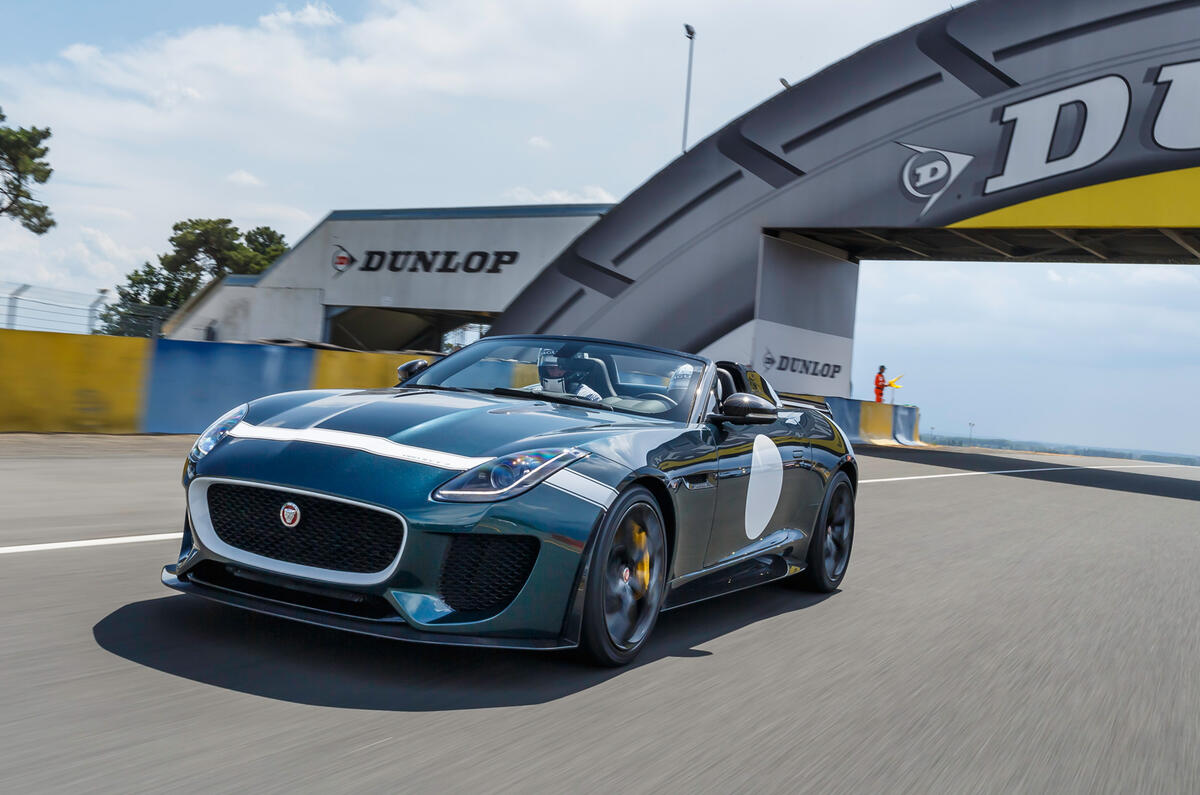
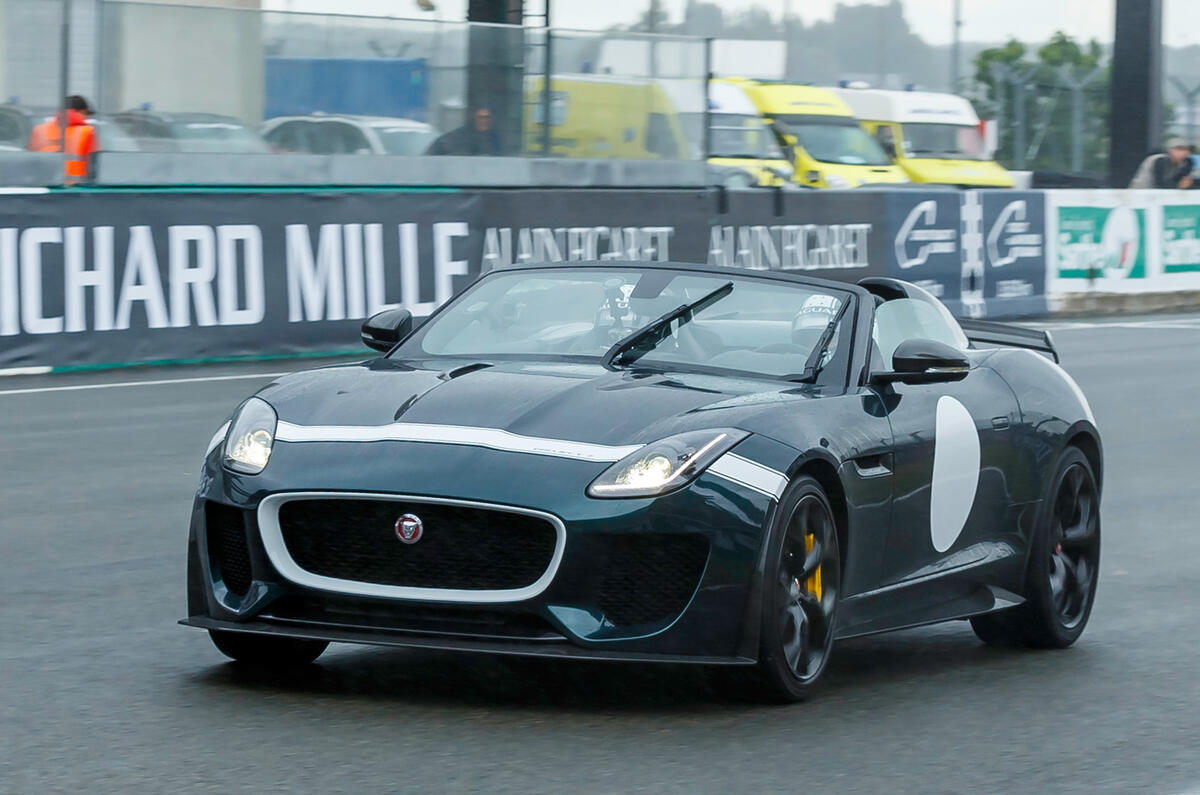
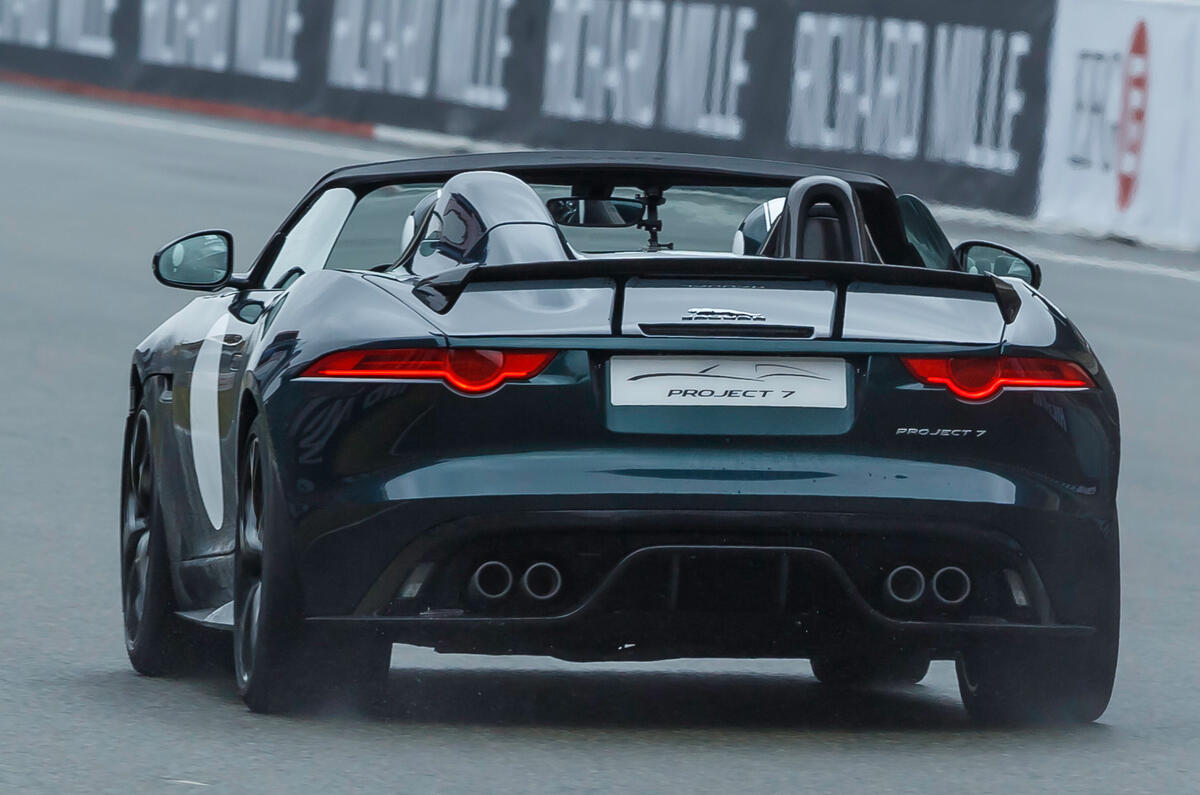
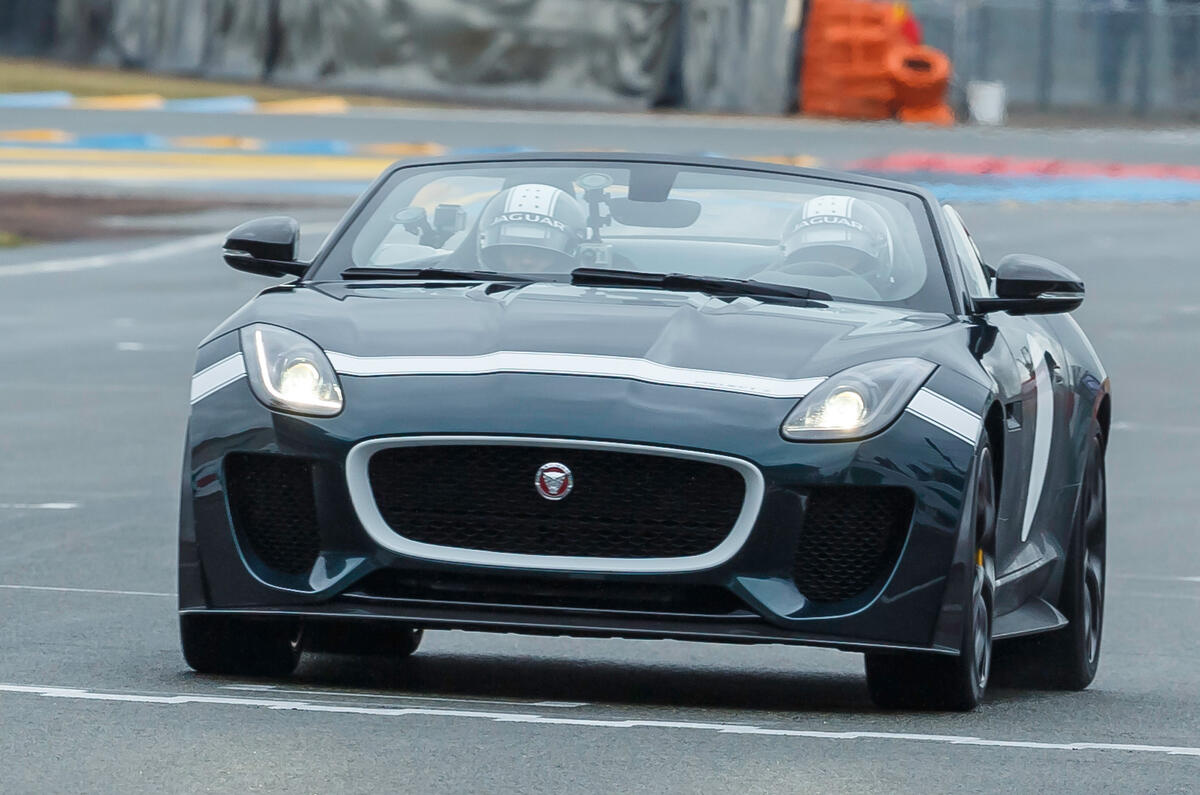
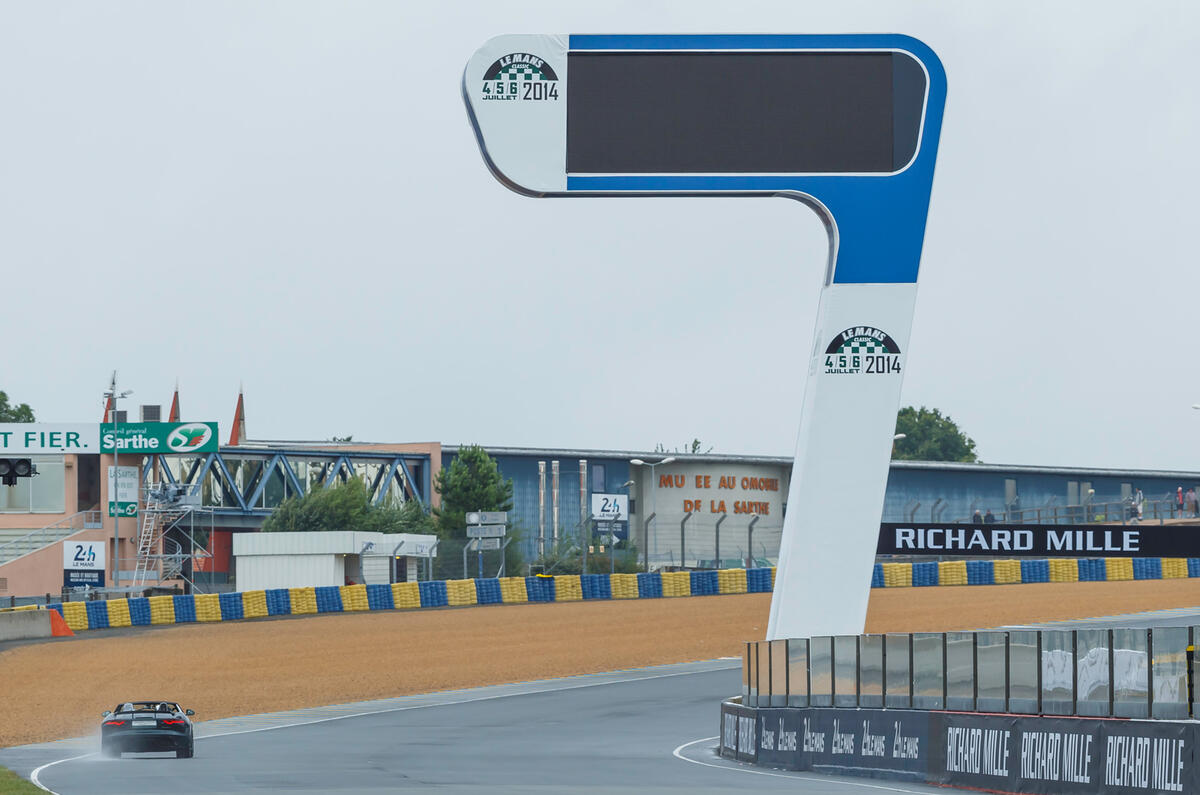

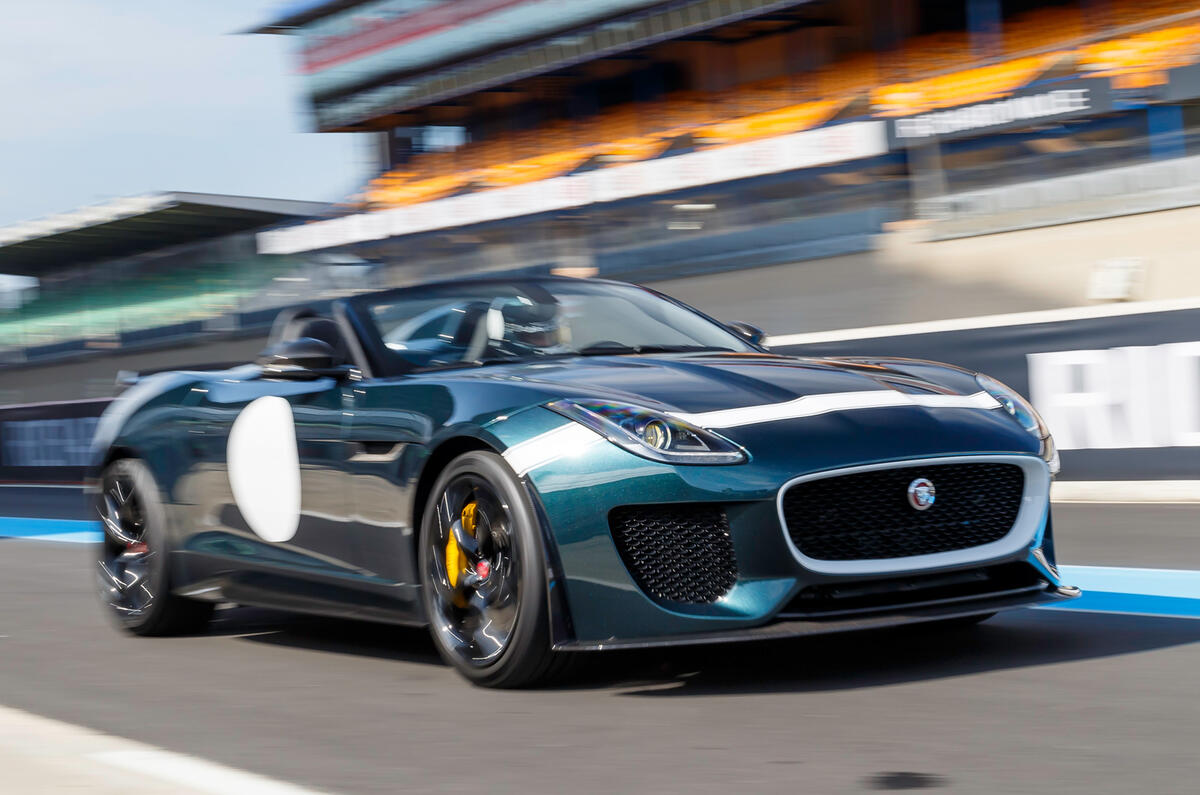

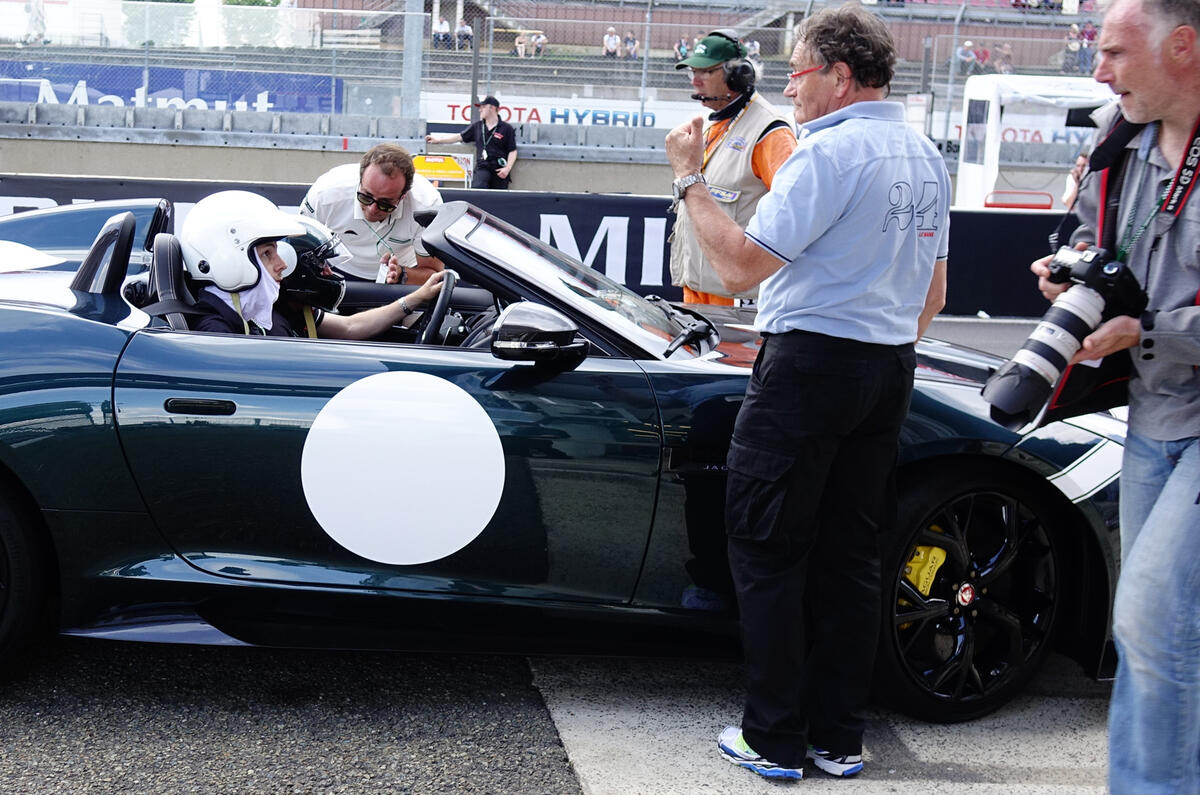



























Join the debate
Add your comment
Poor article.
It would be better if authors eschewed the style and glib rubbish content of the clarkson brigade, who know as much about real engineering as most Engineers know about Midwifery, with the possible exception of James May, and gave more technical content which, does not need to be to the extent of second order differential equations.
Far too often one gets the, "I was tootling down the 'Autoroute du Sol' at a spanking 150mph when I discovered that my 6' 5" frame limited my ability to reach the a/c controls". Really!?
Please tell us Haymarket, how many of your writers have:-
1. Done a Motor Vehicle Apprenticeship?
2. Are qualified Professional Engineers?
3. Are registered Automobile Engineers (of the IMechE preferably)?
4. Are motor trade specialists, say 'salesmen if you like'. Nah, storemen, Mechanics etc., whatever because they are all important in the car owning experience.
There are some Autocar Staffers who can certainly drive; but then a lot of us ordinary mortals can do that.
Please at least try and keep the English clear and simple not replete with pointless cliches and euphemisms.
agree. they only managed to
Cheap Trick